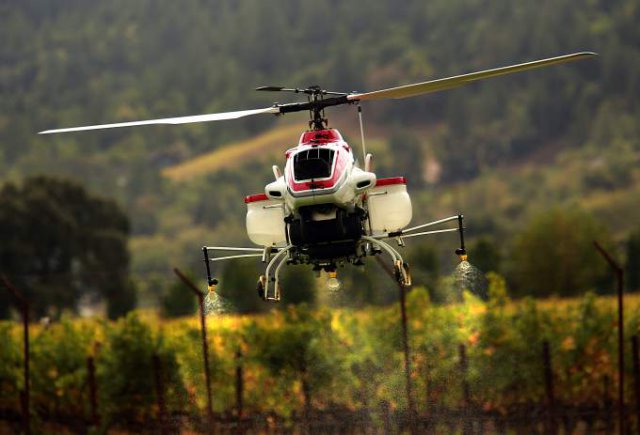Jeff Lorton doesn’t want to declare the Oregon UAS Future Farm Expo dead. He prefers the terms “in stasis” or “on life support.”
Regardless of the terminology, there will be no Future Farm Expo at the Pendleton Convention Center this year, ending the agricultural unmanned aerial systems exposition after two years in Eastern Oregon.
The expo was a key part of Future Farm, a Pendleton-based project meant to connect farms with UAS companies looking to test their agricultural technology.
The city bankrolled the Future Farm through a $150,000 grant from SOAR Oregon, a now-defunct nonprofit funded in part by Oregon State Lottery money, and added $10,000 of its own.
Pendleton signed a contract with Duke Joseph, an advertising agency, to run the Future Farm, promote it, and create a database of contacts from the agriculture and technology industries.
Lorton, Duke Joseph’s co-owner, said his company had done events similar to the Future Farm Expo in Yamhill County and Kennewick.
Future Farm held the Ag Drone Rodeo at an air strip near Stanfield in 2016, rebranding it the Future Farm Expo in 2017 when it moved to the Pendleton Convention Center.
Lorton said the problem with keeping the expo going past the second year was funding.
He said the money from the grant had been used by the time the second event was held, leading Duke Joseph to cover the cost of the expo.
“We lost our shirts on it, honestly,” he said.
Lorton said unforeseen expenses included inviting a contingent of UAS professionals from South America only to find out that they didn’t have money for food, lodging, or transportation when they arrived.
Lorton said SOAR Oregon promised Future Farm that it would provide more funding after the initial grant as long as the project met the grant conditions.
Future Farm met those benchmarks, Lorton said, which not only included creating a UAS demo event, but also moving and testing a Yamaha helicopter drone and establishing a sensor network in a local field.
But Lorton said SOAR Oregon was beset by turnover at its executive director position.
“It’s an indication that something is not right with the host,” he said of the nonprofit, which folded in early 2018.
When Future Farm returned to the organization asking for more money, Lorton said SOAR Oregon was no longer interested in funding the project.
Lorton said he’s still invested in Pendleton, having moved his business from Carlton since the Future Farm was established.
The city and Duke Joseph are frequent business partners.
According to city financial records, Pendleton paid Duke Joseph $131,391 between Nov. 19, 2015 and June 30, 2017, not only for Future Farm-related expenditures but for other projects like marketing for SeaPort Airlines, the Pendleton airport’s former air service provider, and the Pendleton UAS Range.
In June, the city entered into a contract with Duke Joseph to manage the Pendleton UAS Range’s website and social media accounts for the second year in a row.
While the city is no longer paying Duke Joseph for Future Farm, Lorton said he still fields inquiries about it from drone companies and connects them with the city.
He said the overall Future Farm effort is still alive, with the company pitching the Oregon Department of Agriculture on increasing investment in agricultural technology education.
Steve Chrisman, Pendleton airport manager and economic development director, said he knew that the Future Farm was intended to last longer, but it still paid dividends for the city.
One of the partners in Future Farm was Digital Harvest, a UAS company that helped bring Yamaha and its aerial spraying drone to Pendleton.
Chrisman directly attributed Yamaha’s continued presence at the drone range to the Future Farm, adding that three other agricultural UAS companies are interested in testing at the range due to the publicity Future Farm generated, although he declined to identify them.
“I would go so far to give them an ‘A’ in that effort,” he said.
Yamaha is the only company with a permanent presence at the range testing an agricultural drone, and Chrisman said the UAS industry anticipated agriculture drones would comprise a bigger share of the marketplace than they have.
But overall, Chrisman thinks the $160,000 the city and state spent was well invested.
Source: East Oregonian

